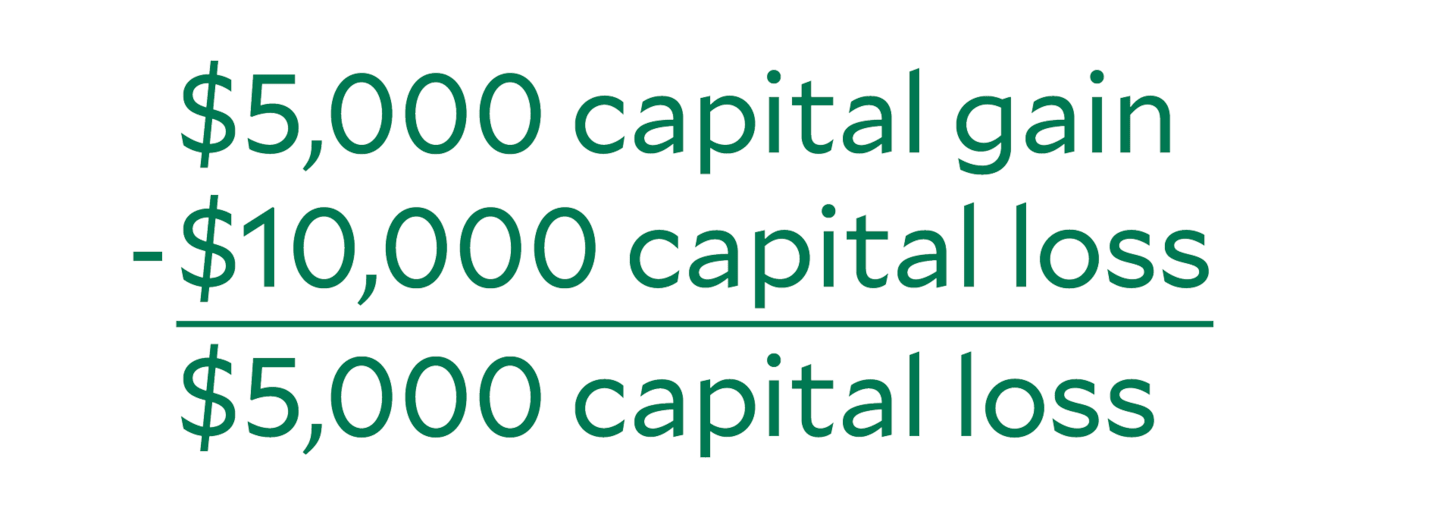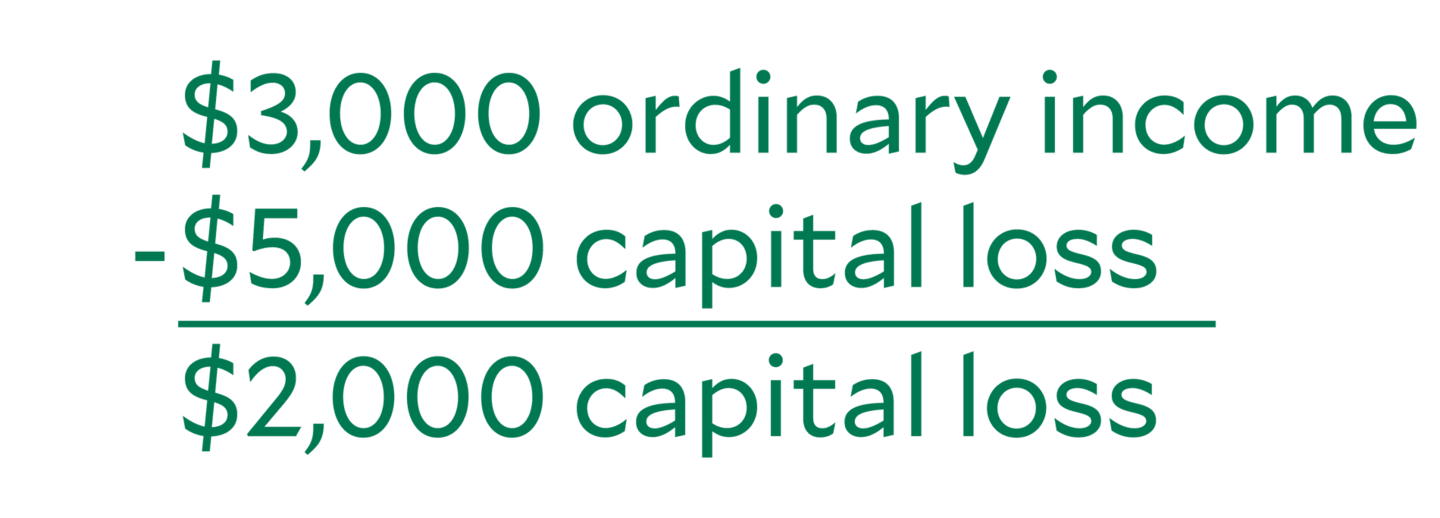Tax-Loss Harvesting: What It Is and How It Works
What you need to know to help minimize your taxes when selling investments.
At A Glance
What It Is
Tax-loss harvesting involves offsetting capital gains with capital losses to reduce current and future years’ tax bills.
When To Use It
The market’s ups and downs create opportunities all year long to take advantage of market volatility and harvest losses.
Rules and Limitations
Tax-loss harvesting gives you more control over your tax situation but be aware of several costly mistakes.
How Tax-Loss Harvesting Can Work to Reduce Your Tax Bill
Sometimes, the markets hand us lemons. But even in an environment where both stocks and bonds are posting negative returns, there may be a sweet side for investors in the form of tax savings and portfolio benefits.
Learn the ins and outs of tax-loss harvesting and the importance of using this strategy appropriately. It’s always a good idea to consult a tax advisor for your situation, but being aware of general guidelines can help you take your lemons and make lemonade.
Hypothetical Tax-Loss Harvesting Example
Tax-loss harvesting reduces the cost basis and may defer capital gains to the future. Here’s a hypothetical example of how it works.
Mary and Max bought two mutual funds years ago for $25,000 each.
Investment A | Investment B | |
|---|---|---|
Original Value | $25,000 | $25,000 |
Current Value | $15,000 | $30,000 |
Result if Sold | $10,000 capital loss | $5,000 taxable capital gain |
Tax-Loss Harvesting
The $10,000 loss from Investment A offsets the $5,000 gain from Investment B.
This eliminates the taxable gain and reduces the loss to $5,000.
Mary and Max no longer owe taxes on a capital gain resulting in $1,190 potential tax savings.
(Assuming Mary and Max are in the highest tax bracket of 37%, the $5,000 gain from Investment B would have been taxed at the current long-term capital gains rate of 23.8%.)

Opportunity for Additional Tax Savings
The current tax code allows taxpayers to apply up to $3,000 a year in remaining capital losses to reduce ordinary income, including income from dividends or interest.
Mary and Max use the remaining $5,000 loss to offset $3,000 of their ordinary income in the current tax year.
The remaining $2,000 loss can be carried forward to offset capital gains or ordinary income in future tax years.
Mary and Max (in the 37% marginal tax bracket) reduced their current-year taxable income by $3,000.
The result is $1,110 in potential additional income tax savings.

Who Can Benefit? (Capital Gains Not Required)

Investors with capital gains, which can come from a variety of sources:
Rebalancing portfolios.
Reducing large concentrated positions.
Liquidating investments for income or other financial reasons.
Receiving capital gains distributions from actively managed mutual funds in taxable accounts.
Note: Flows into and out of mutual funds are transacted in cash. The manager often must sell portfolio securities to accommodate shareholder redemptions or to reallocate assets. These sales may create capital gains for all fund shareholders, not just the ones selling their shares. These gains are taxable for all fund shareholders if held within taxable accounts.
Investors with no current-year capital gains to report:
You can still harvest losses to lower your ordinary income by up to $3,000 per year ($1,500 if married and filing separately). Any excess losses above the yearly limits can be carried forward for use in future years, without expiration.
Investments to Consider Selling
Individual stocks, bonds, mutual funds and exchange-traded funds (ETFs) held in taxable accounts are all potential candidates for tax-loss harvesting. Consider selling:
Investments that haven’t met your expectations.
Sometimes, your initial reasons for holding an investment do not pan out. It can be tricky to sell because investors are susceptible to the "sunk-cost fallacy," which is the idea that, because you’ve already incurred costs, you must stick with the investment until you “get your money back.” This can lead to holding on to losing positions for way too long. You can reframe your thinking by asking yourself, “If I didn’t own this, would I buy it today?” If the answer is no, this may be a good candidate to sell and put your money to better use.
Investments that have grown to become large, concentrated positions.
Letting your winners run too long can lead to a lopsided portfolio. This increases the risk that your fortunes rise and fall based on the performance of one security or asset class. Tax-loss harvesting can help you rebalance your portfolio.
Suppose the stock market has experienced a bull market. Your portfolio has drifted to 75% equities and 25% bonds from its original target of 60% equities and 40% bonds. In that case, you could sell some of your shares in investments that have appreciated to become larger positions in your portfolio than you intended. You could then buy bond investments until you’re back to your original target investment mix—putting your asset allocation back on track while lowering your tax bill.
Investments that have similar exposure in a tax-efficient alternative.
Both ETFs and mutual funds are subject to taxes on the difference between market value and cost basis when they are sold. They also are subject to taxes on capital gains distributions and income incurred while shares are held. But generally, ETFs are more tax efficient than traditional mutual funds because an ETF is bought and sold from one investor to another on an exchange—leading to fewer taxable events.
Ownership of the ETF changes hands without directly selling the underlying stocks or other securities. This type of transaction, along with the mechanics of how ETF shares are issued and redeemed, typically results in fewer capital gains than mutual funds. Thus, ETFs could keep a larger pool of assets invested compared to mutual funds—which may mean more money that potentially earns returns and benefits from the power of compounding.
Still, you need to consider if a replacement security would be deemed substantially identical by the IRS to avoid violating the wash-sale rule (discussed below).

Rules and Limitations: Avoid Costly Mistakes
While a tax-loss harvesting strategy can be effective, there are several costly mistakes you should be aware of, including:
Wash-Sale Rule
The IRS prohibits wash sales—creating “artificial losses” by selling securities at a loss and buying the same or a substantially identical security within 30 days before or after the sale (a total of 60 days).
If you violate this rule, the IRS will disallow the loss, and you may end up paying taxes on gains that you thought were offset. Although the losses may not be “lost forever” and added back to the basis of the new securities purchased, it may defeat the purpose of harvesting the loss.
Some factors to consider when deciding on a replacement investment that would not violate the wash-sale rule would be the degree of holdings overlap and the difference in prospective returns.
Not for Tax-Advantaged Accounts
Stick with taxable accounts when using tax-loss harvesting. You can't deduct losses generated in tax-deferred accounts like individual retirement accounts (IRAs), 401(k)s and 529s.
Additionally, avoid buying replacement investments inside the tax-advantaged accounts. If you bought back the same investment or a substantially identical one in an IRA account, for example, the tax loss is lost forever.
In the same vein, avoid related-party rules, where one spouse sells a security at a loss and buys the same security back in the other spouse’s taxable account.
Other Considerations: Short- vs. Long-Term Gains and Losses
Long- and short-term capital gains are taxed at different rates. Long-term gains may be offset by longer-term losses. Likewise, short-term gains may be offset by short-term losses. The net losses of either type can offset the gain of the other (i.e., net long-term losses can offset short-term capital gains).
In some cases, short-term capital losses, assets held one year or less, may be considered more valuable than long-term capital losses. The reason is that short-term losses directly offset short-term capital gains, which are taxed at ordinary income rates—currently up to 37%—and subject to a Medicare surtax of 3.8%. Long-term capital gains are currently taxed at preferred tax rates, up to 20% (plus the Medicare surtax).
Don’t Let Taxes Drive Your Investing Decisions
While taxes are an important consideration when investing, and we hear about tax-loss harvesting causing the "January effect" in markets each year, taxes should not be the sole driver of investment decisions. Rash decisions based solely on tax considerations can lead to poor performance, a change in risk level, large, embedded gains in your portfolio and an outsize tax bill down the road.
When used wisely, tax-loss harvesting can be a powerful tool to remain in control over your tax situation and potentially keep more money working for your future.
Exchange Traded Funds (ETFs) are bought and sold through exchange trading at market price (not NAV), and are not individually redeemed from the fund. Shares may trade at a premium or discount to their NAV in the secondary market. Brokerage commissions will reduce returns.
Investment return and principal value of security investments will fluctuate. The value at the time of redemption may be more or less than the original cost. Past performance is no guarantee of future results.
IRS Circular 230 Disclosure: American Century Companies, Inc. and its affiliates do not provide tax advice. Accordingly, any discussion of U.S. tax matters contained herein (including any attachments) is not intended or written to be used, and cannot be used, in connection with the promotion, marketing or recommendation by anyone unaffiliated with American Century Companies, Inc. of any of the matters addressed herein or for the purpose of avoiding U.S. tax-related penalties.
This information is for educational purposes only and is not intended as tax advice. Please consult your tax advisor for more detailed information or for advice regarding your individual situation.
This material has been prepared for educational purposes only. It is not intended to provide, and should not be relied upon for, investment, accounting, legal or tax advice.
IRA investment earnings are not taxed. Depending on the type of IRA and certain other factors, these earnings, as well as the original contributions, may be taxed at your ordinary income tax rate upon withdrawal. A 10% penalty may be imposed for early withdrawal before age 59½.